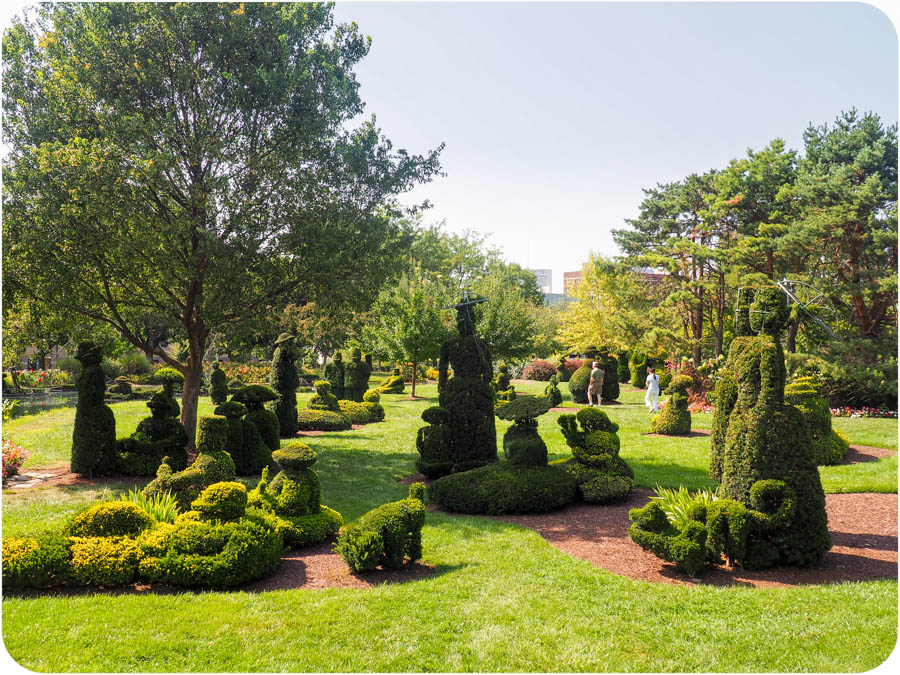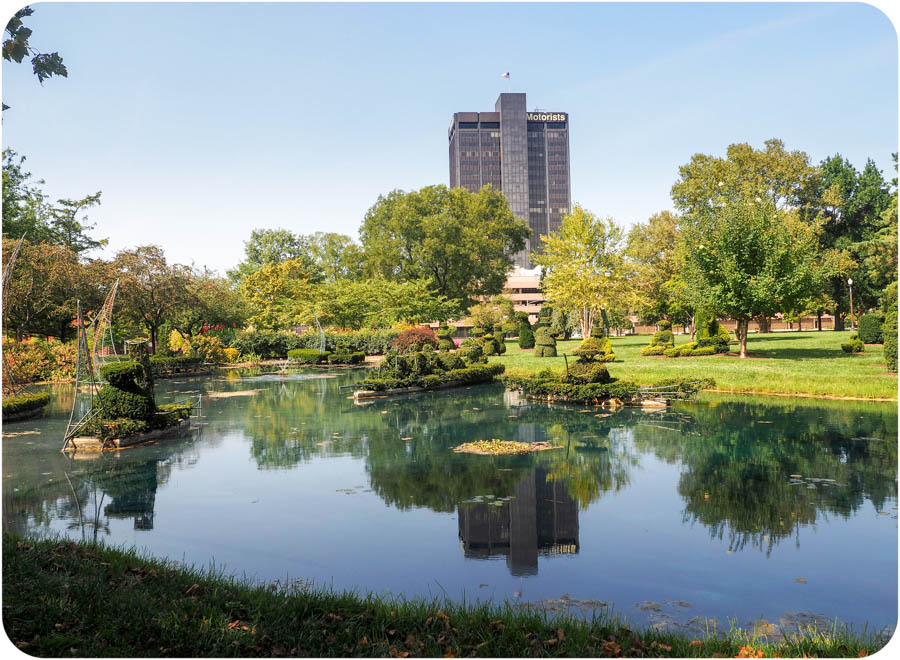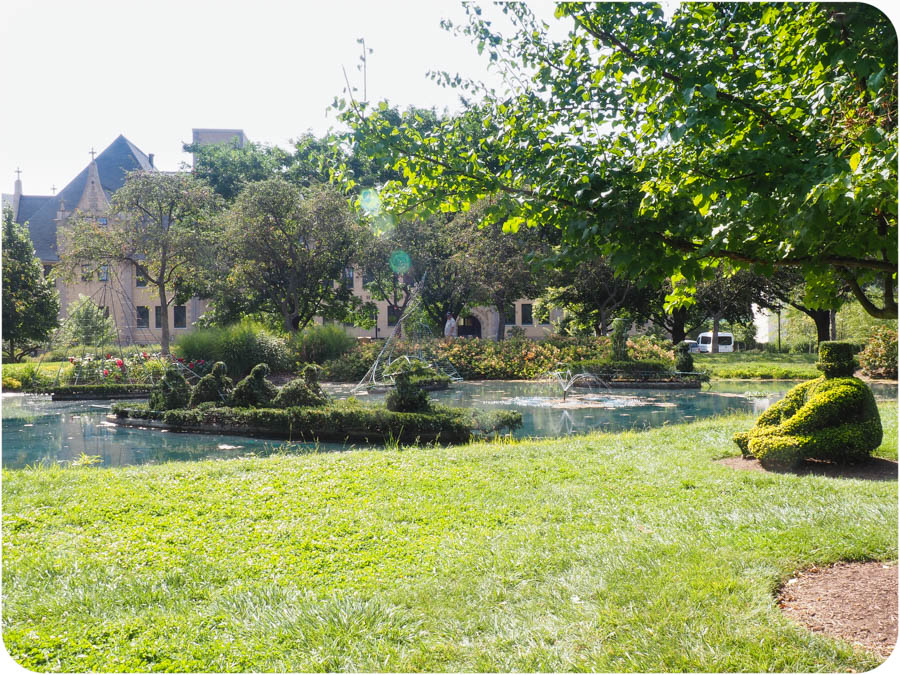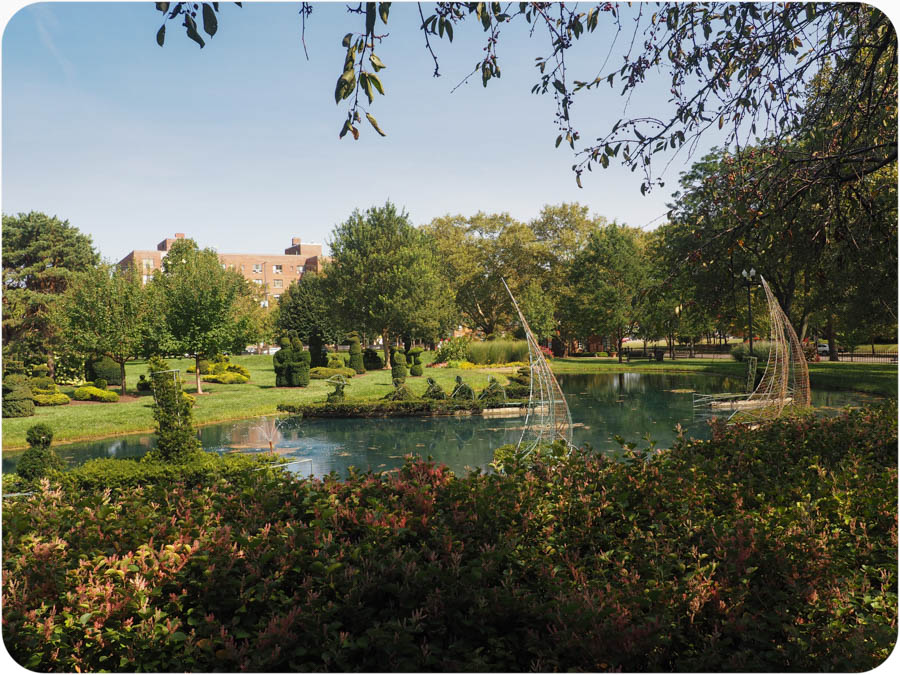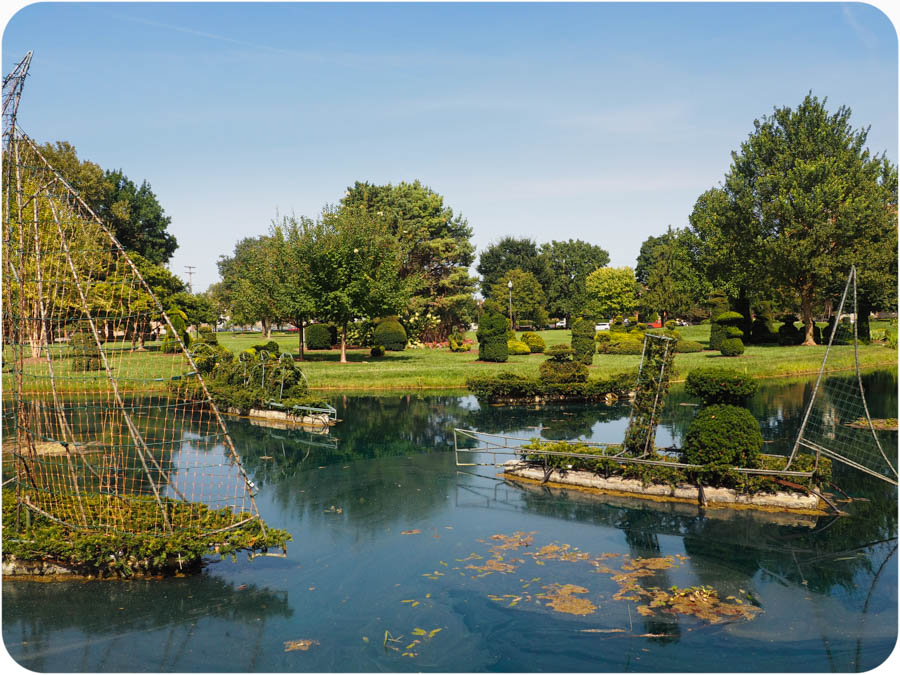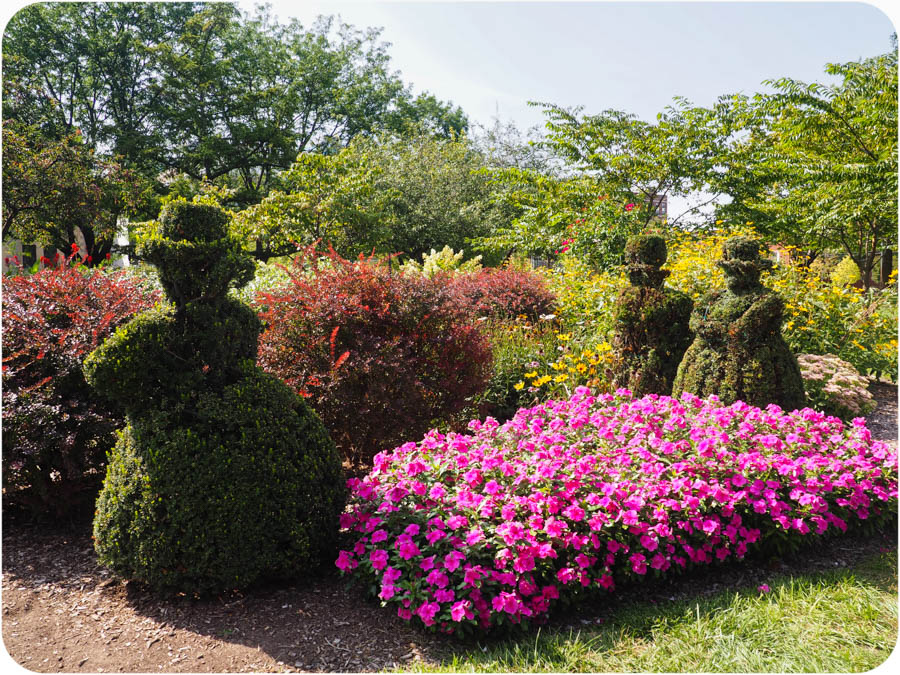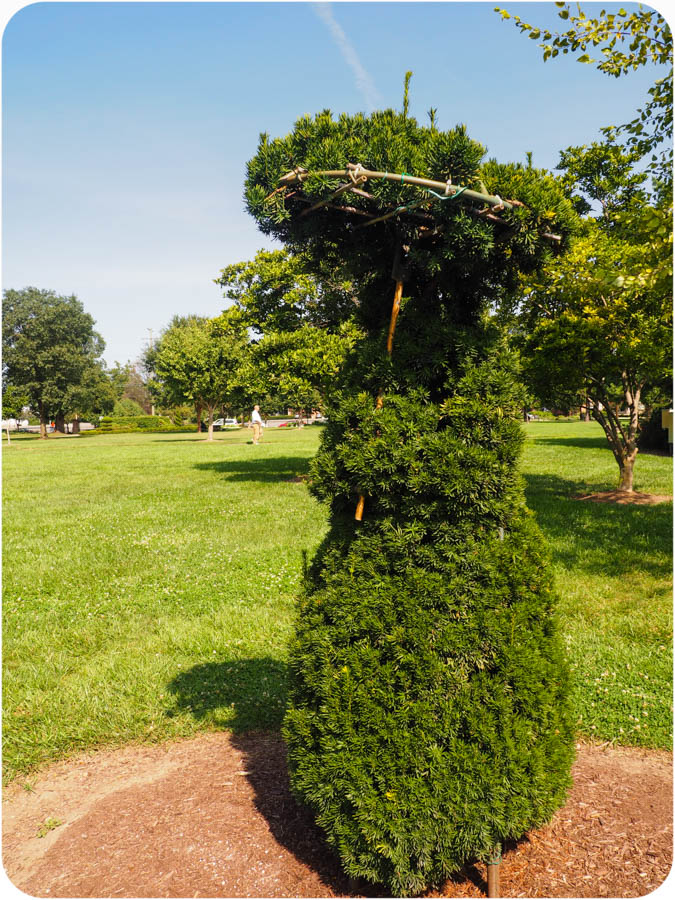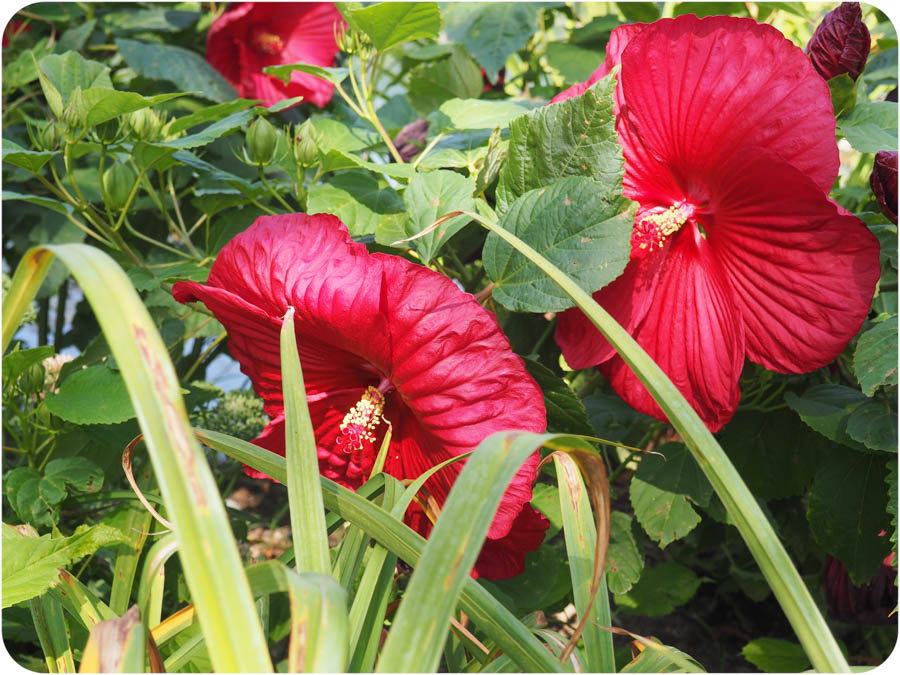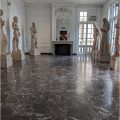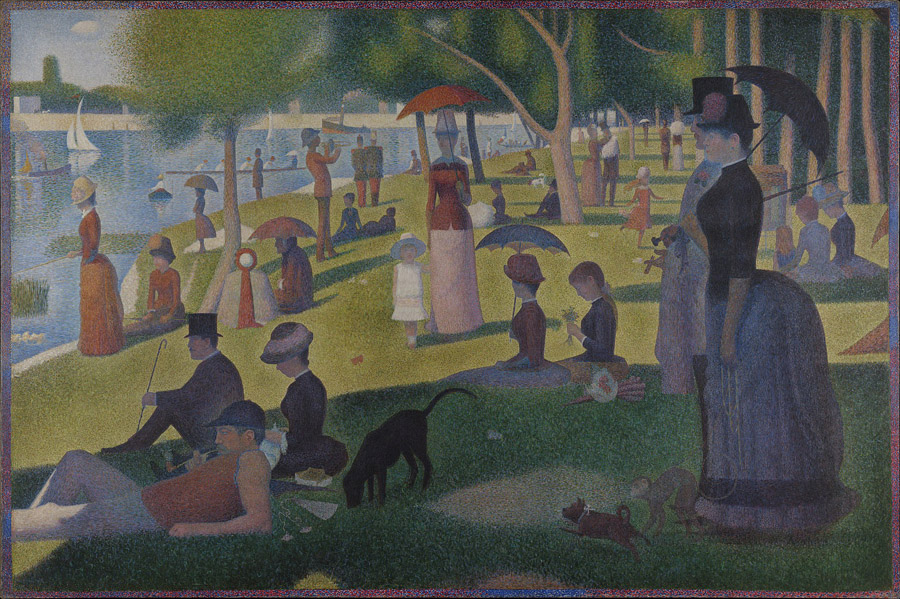
Have you ever wished you could step inside a piece of artwork? To move about the people portrayed, smell the luscious ripe fruit gently warmed by the sun on a rich wooden table, see the horses’s muscles ripple under their shining coats? Well, you can’t go quite that far, but you can walk among the topiary version of Georges Seurat’s pointillist masterpiece, A Sunday on La Grande Jatte.
Located in the downtown of Columbus, Ohio, the Topiary Park (also known as Old Deaf School Park) was dedicated in 1992 and contains some 67 yew topiaries: 54 humans, 8 boats, three dogs, a monkey, and a cat. I didn’t count them all, but I trust none have scurried away in the night since its inception. It’s a “landscape of a painting of a landscape”, a work of art that references and celebrates art, a living painting. What’s especially striking about recreating this particular art style in topiary is that needles of the yew tree perform a similar function: disparate points of greenery, they come together en masse and provide shape and depth in the same way the distinct dots of color create a pointillist scene.
The rest of the park is no slouch, either, with its careful landscaping, cicadas buzzing from the branches. I was excited to see my first ever cicada exoskeleton here (although the live ones still eluded me), and I got all up in its business. It’s impressive how tightly this discarded casing clings to the bark of a tree, even with no visible leverage. I’m sure I’d feel a little differently about it if I lived in one of those places that sees massive swarms every thirteen years, no one likes a “swarm” unless it’s a “swarm of the world’s cutest puppies” or a “swarm of pizza delivery people each with a pizza more delicious than the last” or a “swarm of money being pumped into your house through the mail slot, turning your living room into a giant cash cage”. Sadly, that kind of swarm has yet to materialize.
